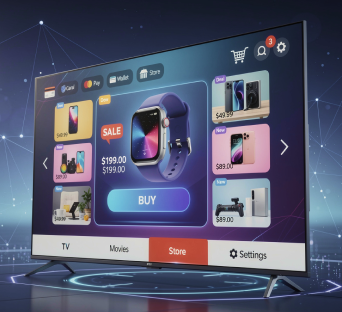Product request
You are looking for a solution:
Select an option, and we will develop the best offer
for you
Generation Z and TV: must-have features for young viewers

Generation Z consists of people who grew up surrounded by smartphones, streaming, and social media. They’ve never known television without pause or rewind, they don’t wait for scheduled programming, and they don’t see TV as background noise. For them, video is part of a personalized digital experience. If an IPTV operator wants to keep young viewers and TV audiences engaged, it's essential that the interface, content, and user flow must be built around the principle of “everything here and now.”
From linear TV to personal streaming
Young users no longer follow broadcast schedules. They are used to on-demand platforms for youth and the streaming habits of Gen Z — choosing what to watch, when, and on which device. IPTV platforms that allow seamless switching between live channels and VOD libraries gain an advantage. Modern middleware solutions like Ministra PRO already support hybrid viewing scenarios: you can watch live TV, pause it, and jump to a series without losing context.
Generation Z also expects personalization. Personalized recommendations, curated playlists, and alerts about new episodes are not bonuses but essentials. If an IPTV operator can provide smart content suggestions through viewership analytics, they not only retain subscribers but also increase engagement and ARPU.
Devices and control
For Gen Z, the TV screen is just one of many windows. They easily move between smartphones, laptops, and smart TVs. Cross-platform consistency is therefore crucial: an IPTV app should work identically across all devices, maintaining a unified profile, watch history, and preferences.
The traditional remote control is being replaced by modern interfaces. Voice control, gesture navigation, and mobile-first viewing are now standard. Apps that turn a smartphone into a virtual remote or integrate voice-assistant APIs (e.g., Google Assistant or Alexa) make the service more convenient and modern. It’s not just about having these functions but ensuring instant responsiveness and accurate recognition of commands.
Content: short, dynamic, and contextual
Gen Z prefers short-form content — clips, digests, and quick news segments that fit between daily activities. IPTV operators that adapt their content strategy to this style gain a strong competitive edge. It’s not enough to offer familiar formats; it’s essential to link them to relevant topics, social issues, influencers, and local communities, creating a social TV experience.
Equally important is the visual culture of this generation. Interfaces should be sleek, vibrant, and animated with smooth, native transitions. Even menu design affects brand perception — young users instantly notice outdated visuals.
Social engagement and interactivity
Digital natives don’t want to be passive viewers — they expect interaction. Features like voting during shows, participating in chats, sharing clips, and liking content transform watching into a social engagement experience. IPTV platforms that support interactive TV features and social media integration achieve higher user retention and interaction rates.
Technical reliability and speed
While Generation X tolerated buffering and slow loading, Gen Z TV consumption demands speed. App launch time, interface fluidity, and stream stability are must-haves. Proper infrastructure — CDN delivery, adaptive bitrate streaming, modern codecs like H.265/HEVC, and reliable MAG set-top boxes — ensures high-quality playback with minimal latency.
For IPTV operators, success with this young generation of viewers isn’t a trend but a matter of survival. Modern TV preferences include instant access, personalization, flexibility, and interactivity. Those who integrate mobile apps, voice navigation, and immersive entertainment experiences early will not only keep young audiences engaged but turn them into a sustainable growth driver in the competitive streaming ecosystem.
Recommended

IPTV and E-commerce: Prospects of Built-in Online Stores on the TV Screen
Over the past few years, IPTV platforms have gone beyond being merely a channel for delivering television content.

How to Properly Organize Backup Servers for IPTV Streams
The IPTV and OTT market is growing rapidly, with the quality of broadcasts continuing to improve, the number of channels increasing, and the functionality of set-top boxes and applications expanding.

The Evolution of Codecs: From H.264 to AV1 and VVC — What Should Operators Choose?
Over the past decade, the video market has undergone a rapid shift from linear TV to flexible IPTV/OTT services, where image quality and delivery efficiency play a crucial role.










